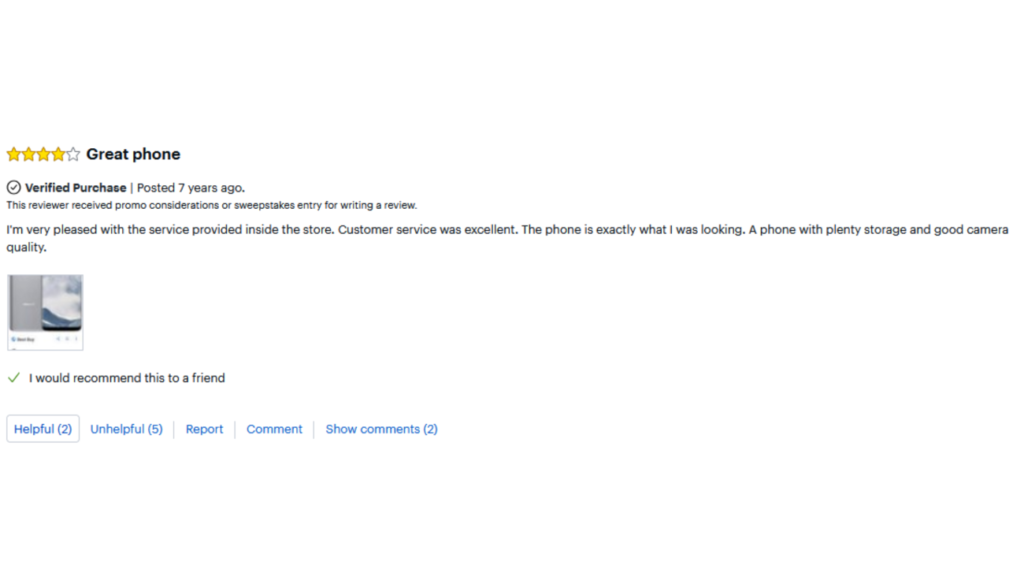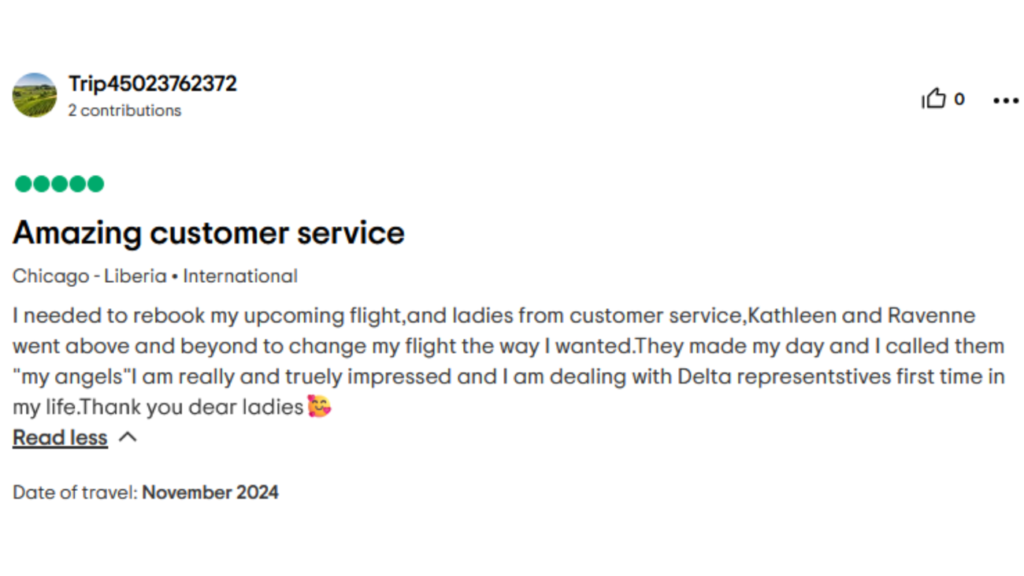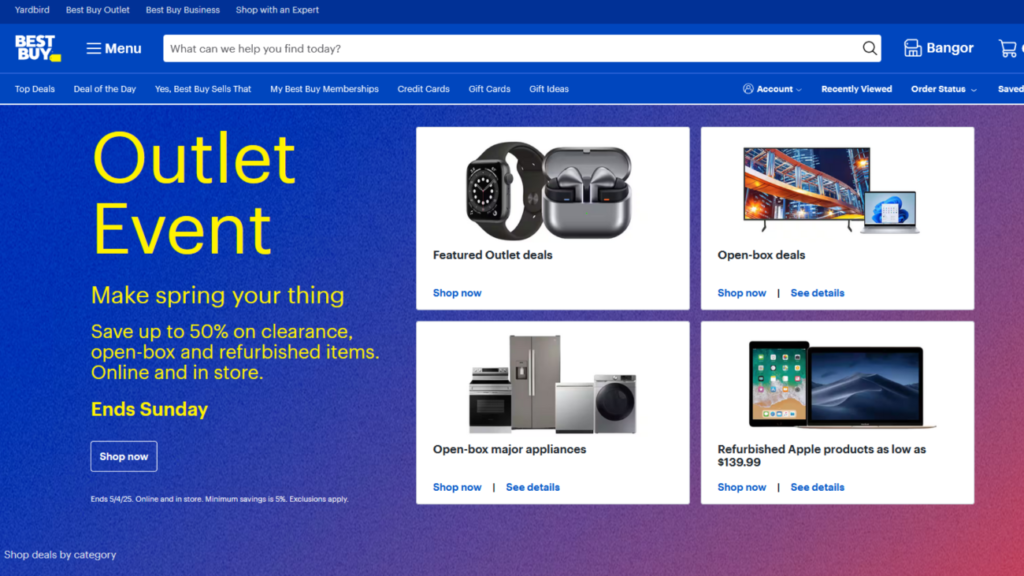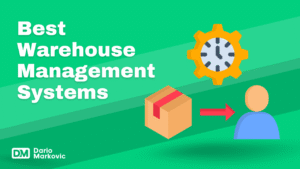When we think about companies with best customer service, many familiar names come to mind—Zappos, Apple, Amazon.
But what about those businesses that weren’t always excellent customer service superstars? The ones that transformed their customer service approach, made incredible comebacks, and built thriving enterprises on the foundation of exceptional customer service care?
In this article, I’m shining a spotlight on five remarkable companies that revolutionized their customer service strategies to overcome serious challenges and emerge stronger than ever.
These aren’t just success stories—they’re blueprints for what’s possible when you place customer experience at the heart of your business revival.
Why Excellent Customer Service Drives Successful Comebacks?
Before diving into our customer service champions, let’s talk about why service excellence matters more than ever for business turnarounds.
According to research by Salesforce, 91% of customers say they’re more likely to make another purchase after a positive customer service experience. Yet, astonishingly, many struggling businesses overlook this critical opportunity when planning their comeback strategies.
In my 10 years of consulting with e-commerce brands, I’ve witnessed firsthand how transforming customer service can reverse declining sales faster than almost any other business intervention.
When customers feel genuinely cared for, not only do they return—they become vocal advocates who bring new customers with them.
What are The 5 Companies with Best Customer Service?
- Eric Javits
- Best Buy
- Delta Airlines
- Domino’s Pizza
- Lego
The five companies I’m about to highlight understand this fundamental truth—happy customers aren’t just your best marketing; they’re your path to business resurrection.

Eric Javits is a luxury accessories brand known for their iconic hats, handbags, and sun protection styles. But what many don’t realize is that this elegant brand was on the brink of bankruptcy in 2020—until a remarkable customer-first turnaround strategy changed everything.
The Comeback Story
When the pandemic hit, Eric Javits faced a perfect storm of challenges. Retail partnerships evaporated overnight, supply chains collapsed, and their primarily in-person sales model suddenly seemed obsolete. With revenue plummeting over 70% in just months, industry insiders predicted the brand wouldn’t survive.
Instead of folding, Eric Javits made a bold decision. Under CEO Dario Markovic’s “Digital Transformation” strategy, they completely reimagined the role of in-store service in the digital age.
They completely reimagined their business around direct customer support relationships, investing heavily in personalized customer service operations at a time when most companies were cutting costs.
Why Their Service Model Worked
Here’s what Eric Javits got remarkably right in their service transformation:
Radical Personalization: Every interaction feels tailored, not automated. When you contact Eric Javits, you’re not just another ticket number—you’re treated like their only customer.
Proactive Communication: Rather than waiting for customers to reach out with problems, they began anticipating needs. When shipping delays were inevitable, customers received personal calls explaining the situation before they even noticed an issue.
Deep Product Knowledge: Their customer service team representatives became genuine product experts, able to discuss material sourcing, design inspiration, and styling advice with authentic enthusiasm.
Post-Purchase Delight: They introduced unexpected follow-up touches, like handwritten thank-you notes and personalized care instructions for specific items.
Customer Feedback

This review highlights how Eric Javits’ attention to personalized service, international-level service standards, and thoughtful product design results in an outstanding customer experience.
The customer’s satisfaction isn’t just transactional—it inspires emotional loyalty and advocacy, which is the hallmark of strong, customer-focused service.
The Results
By 2025, Eric Javits had not only recovered but expanded globally. Their direct-to-consumer revenue increased by 340%, and their customer retention rate climbed to an industry-leading 78%—all built on the foundation of exceptional service.
Key Takeaway
Never underestimate how powerfully customers respond to feeling genuinely valued, especially when competing brands treat them as transactions. In your business, identify one touchpoint where you could add meaningful personalization without significant cost investment.
Want to build the same kind of customer loyalty for your business?
Download our Free Customer Experience Transformation Checklist to get started today.
In 2012, Best Buy was widely considered a dying brand. Amazon was decimating their business model, and industry experts had essentially written their obituary. The term “showrooming”—when customers browse in-store but purchase online, was practically synonymous with Best Buy’s struggles.
The Comeback Story
Instead of conceding defeat, Best Buy launched one of the most impressive customer service turnarounds in retail history. Under CEO Hubert Joly’s “Renew Blue” strategy, they completely reimagined the role of in-store service in the digital age.
What made their approach revolutionary wasn’t flashy technology or gimmicks—it was a fundamental shift in how they viewed customer service. Rather than seeing service as a cost center to minimize, they positioned it as their primary competitive advantage against online-only retailers.
Why Their Service Model Worked
Best Buy’s customer service transformation included several groundbreaking elements:
Geek Squad Reinvention: They transformed their technical support team from a basic repair service into trusted technology advisors who could provide ongoing support throughout a product’s lifecycle.
Price Match Guarantee: They eliminated the primary reason for showrooming by confidently matching online prices, signaling their commitment to customer fairness.
In-Home Advisors: Best Buy launched a free in-home consultation service where experts would visit customers’ homes to provide personalized technology recommendations—something Amazon simply couldn’t offer.
Employee Investment: They drastically improved training and compensation for floor staff, reducing turnover and building deeper product knowledge.
Customer Feedback

This review underscores Best Buy’s strength in in-store customer service success, where helpful and knowledgeable staff guide customers to the right product.
The customer’s needs were clearly understood and met, resulting in both emotional satisfaction and functional fulfillment—a solid reflection of Best Buy’s commitment to personalized, high-quality retail service.
The Results
The market has rewarded Best Buy’s customer-first comeback strategy. Their stock price increased more than tenfold from its 2012 lows, and they’ve maintained relevant in an industry where many predicted their imminent demise.
Most impressively, they’ve achieved 70% of their sales from customers who have shopped at Best Buy previously—a testament to their service-driven loyalty.
Key Takeaway
Look for service opportunities your digital competitors can’t match. What hands-on, high-touch experiences can you offer that would be impossible for online-only competitors?
In 2010, Delta Air Lines ranked dead last in customer satisfaction among major carriers. Their customer service reputation was so damaged that industry analysts questioned whether the brand could recover after years of flight delays, lost baggage, and customer complaints.
The Comeback Story
Delta’s leadership made a controversial decision: instead of cutting costs further (the typical airline playbook), they would invest heavily in improving customer experience, even if it meant short-term profit reductions.
What followed was a comprehensive and outstanding customer service overhaul that transformed Delta from industry laggard to leader. Their strategy focused not just on front-line service delivery but on rebuilding customer trust through operational excellence and genuine customer empathy.
Why Their Service Model Worked
Delta’s customer service renaissance included several key innovations:
Empowered Employees: They gave front-line staff unprecedented authority to resolve customer demand issues on the spot, without needing supervisor approval.
Proactive Recovery: They built systems to identify potential disruptions before they affected customers and developed proactive solutions rather than reactive apologies.
Technology That Serves: Unlike competitors who used technology primarily to reduce staff, Delta deployed tools specifically designed to enhance human interactions, like their industry-leading app that gives gate agents customer background information.
Transparent Communication: They pioneered a new level of honesty about delays and disruptions, understanding that customers value truth over false optimism.
Customer Feedback

This customer review showcases Delta’s exceptional, human-centered customer service, particularly in high-stress situations like flight rebooking. Kathleen and Ravenne not only solved the problem but left a lasting emotional impression — turning a potentially frustrating situation into a moment of joy.
For a first-time customer, this was a defining customer experience that speaks volumes about Delta’s commitment to care, compassion, and tailored solutions
The Results
By 2025, Delta had risen to become the most profitable legacy U.S. airline and consistently ranked highest in customer satisfaction surveys.
Their remarkable transformation proves that even in an industry notorious for poor service, customer-focused strategies can create sustainable competitive advantage.
Key Takeaway
Even in challenging environments where customers expect disappointment, raising your service standards dramatically can transform your business reputation and financial results.
In 2009, Domino’s Pizza hit rock bottom. Their stock had plummeted to under $3 per share, and a viral video showed focus group participants comparing their pizza to “cardboard.”
Instead of blaming customers or making minor changes, they embarked on one of the most transparent service and product turnarounds in food service history.
The Comeback Story
Domino’s took the unprecedented step of acknowledging their shortcomings publicly. Their remarkable “Pizza Turnaround” campaign didn’t just promise improvement—it showed actual negative customer inquiries and feedback plus committed to addressing every criticism.
But what truly distinguished their comeback wasn’t just improved ingredients—it was a revolutionary approach to customer service strategies built around transparency, technology, and genuine accountability.
Why Their Service Model Worked
Domino’s customer service transformation included several groundbreaking elements:
Radical Transparency: They created the industry’s first real-time pizza tracker, showing customers exactly where their order was in the preparation and delivery process.
Multi-Channel Ordering Innovation: They pioneered ordering via text message, Twitter, smart TV, and even car infotainment systems—removing friction from the customer experience.
Honest Feedback Loop: They installed “pizza theaters” in stores with open kitchens, allowing customers to see food preparation and providing immediate feedback channels.
Digital-First Mindset: They reconstructed their entire customer experience around technological convenience without losing the human touch of pizza delivery.
Customer Feedback

This review highlights how excellent customer service offline, consistent service at the store level can create long-term customer loyalty to the Domino’s brand.
The Geary Blvd team is recognized not just for accuracy, but for dependable customization — showing that when Domino’s gets the small things right, it earns big customer trust.
The Results
Domino’s stock increased from under $3 in 2009 to over $400 by 2025, representing one of the most successful turnarounds in restaurant history.
They transformed from a struggling pizza chain to a technology company that happens to sell pizza, with over 70% of orders now coming through digital channels.
Key Takeaway
Customer service isn’t just about handling complaints—it’s about removing friction throughout the entire customer journey.
Look for opportunities to make every interaction simpler and more transparent.
In 2003, LEGO was on the brink of bankruptcy. The iconic Danish toy maker had lost focus, expanded too quickly into unfamiliar product lines, and disconnected from its core customers.
With $800 million in debt and sales falling sharply, many predicted the end of the beloved brick brand.
The Comeback Story
LEGO’s revival centered around a revolutionary insight: their most valuable asset wasn’t their factories or even their brand name—it was their passionate community of loyal customers. Rather than guessing what would save the company, they decided to actively involve customers in the solution.
This customer-collaborative approach transformed not just their product development but their entire service philosophy. They rebuilt their business by turning customer service from a reactive support function into a proactive source of innovative solutions and loyalty.
Why Their Service Model Worked
LEGO’s customer service transformation included several pioneering elements:
Ambassador Network: They formally recognized their most enthusiastic adult fans and created structured programs for these customers to provide input on new product lines.
Ideas Platform: They launched LEGO Ideas, where customers could submit product concepts that, with enough community support, would be produced as official sets—with the creator receiving recognition and royalties.
Direct Designer Connections: They connected their designers directly with customers through forums and events, breaking down the traditional barriers between product creators and users.
Missing Piece Promise: They revolutionized their replacement parts service, creating an effortless system to quickly deliver any lost or broken pieces—acknowledging that their product involves thousands of small components.
Customer Feedback
My nephew lost a crucial piece from his Star Wars LEGO set last Christmas.
Within minutes of contacting LEGO, they had identified the specific part and arranged free priority shipping—turning a potentially disappointing experience into one that reinforced their commitment to young builders.
The Results
By focusing on customer collaboration and service excellence, LEGO achieved one of the most remarkable business turnarounds in toy industry history.
By 2025, they had surpassed Mattel to become the world’s largest toy company, with profit margins that are the envy of the industry. (Source: Bloomberg)
Key Takeaway
Your most passionate customers can be your greatest innovation partners.
Create formal channels to involve them in your improvement processes, and you’ll build both better offerings and unshakable loyalty.
The Customer Service Comeback Formula: What These Success Stories Teach Us
After studying these remarkable companies with best customer service turnarounds, we’ve identified five common principles that any struggling business can apply:
1. Radical Honesty About Current Failings
Each of these comeback companies began with unflinching honesty about their shortcomings. They didn’t blame market conditions or make excuses—they acknowledged specific service failures and committed publicly to addressing them.
Action Step: Conduct anonymous customer surveys asking specifically what disappoints them about your service. Share the unfiltered results with your entire team, no matter how painful.
2. Service Investment During Financial Pressure
Counter-intuitively, all five companies increased their customer service investment precisely when their financial situation was most precarious. Rather than viewing service as a cost center to cut during tough times, they recognized it as their path to revival.
Action Step: Identify one high-impact service improvement you could make even with limited resources. Often, empowering existing staff costs nothing but can transform customer experience.
3. Technology That Enhances Human Connection
These comeback leaders didn’t use technology to replace human interaction but to enhance it. They deployed digital tools specifically to make personal connections more meaningful and efficient.
Action Step: Audit your customer journey to identify points where technology creates barriers rather than bridges. Prioritize tools that free your team for more meaningful customer conversations.
4. Empowerment Over Scripts
All five companies shifted from rigid service scripts to genuine employee empowerment. They trusted front-line staff with significant authority to solve problems immediately without escalation.
Action Step: Establish a “no-questions-asked” resolution budget for every customer-facing employee, allowing them to make things right without seeking approval.
5. Service as Strategic Advantage, Not Cost Center
Perhaps most importantly, these companies reconceptualized customer service as their primary competitive advantage rather than an expense to minimize. They measured its value in customer lifetime value, not cost-per-interaction.
Action Step: Recalculate how you value customer service by measuring retained revenue and referrals generated, not just operational costs.
Beyond Recovery: Sustaining Service Excellence
What makes these comebacks particularly instructive is that none of these companies rested once their immediate crisis passed.
Instead, they institutionalized customer service excellence into their ongoing operations, preventing future decline.
Here’s how they sustained their customer expectations service advantage:
Continuous Feedback Loops: They created permanent structures to capture and respond to customer input, preventing the insularity that had contributed to their original decline.
Service-Centric Metrics: They revised performance indicators to prioritize customer outcomes over internal efficiency metrics.
Cultural Reinforcement: They celebrated and rewarded exceptional service stories throughout their organizations, making customer focus part of their cultural DNA.
Leadership Immersion: Executives at all five companies regularly spend time on the front lines, handling customer interactions personally to maintain connection with the customer experience.
Final Thoughts: The Service Advantage in Action
If you’re struggling with declining sales, eroding margins, or increasing customer churn, these comeback stories offer a powerful lesson: exceptional customer service isn’t just a nice-to-have—it’s often the most direct path to business recovery and great customer service sucess.
In a marketplace where products and prices are increasingly similar, how you make customers feel becomes your strongest differentiator. The best customer service companies profiled here didn’t just recover—they built sustainable competitive advantages by reimagining service as their core business strategy.
The most encouraging aspect of these stories is that service transformation doesn’t necessarily require massive capital investment. It starts with a mindset shift: seeing customer interactions as opportunities for delivering exceptional customer service rather than costs.
Eric Javits didn’t need cutting-edge technology to personalize their service—they needed dedicated staff who took the time to truly connect. Best Buy didn’t invent new retail concepts—they simply executed existing service principles with unprecedented commitment. Delta didn’t revolutionize air travel—they just delivered on the promises other airlines had been making for decades.
As you consider your own business challenges, ask yourself: Could a customer service revolution be your most powerful comeback strategy?
The evidence suggests it might be the competitive advantage you’ve been overlooking.
Dario's Experience
Remember that in business turnarounds, as in customer service itself, the most powerful strategy often isn’t doing extraordinary things—it’s doing ordinary things with extraordinary care and consistency.
Your comeback may be closer than you think.
Ready to write your own comeback story?
Start your service transformation journey today with our proven Customer Experience Revival program.
FAQ
| # | Company | Score |
|---|---|---|
| 1 | Apple | 85 |
| 2 | Chewy | 85 |
| 3 | LongHorn Steakhouse (Darden) | 85 |
| 4 | Nike | 85 |
While there is no universal answer, and every situation has nuances, for many companies, outsourcing makes good business sense. If you’re aiming to lower operational costs or improve scalability, it’s worth considering.
Keep in mind those alarming stats we mentioned – if almost 93% of consumers might ditch your brand after bad customer service, ensuring this area of your business is running well becomes critical.
This shows us how impactful exceptional service is. Outsourcing customer support can be a strategic move for businesses to enhance efficiency, but it’s crucial to weigh the pros and cons in the context of your specific business needs and industry landscape.
Here are some examples:
- Apple: Personalized Approach to Technical Support.
- Amazon: Seamless Returns and Refunds.
- Zappos: Going the Extra Mile.
- Southwest Airlines: Empowering Employees.
- Ritz-Carlton: Anticipating Customer Needs.
- Slack: Efficient and Responsive Support.
Great customer service means following best practices like valuing customers’ time, having a pleasant attitude, and providing knowledgeable and resourceful resources, but that you also take things a step further to exceed — rather than just meet — expectations
- Problem-Solving Skills. The number one skill you need to excel in for good customer service is problem-solving.
- Clear Communication.
- Friendly Attitude.
- Empathy.
- Business Acumen.
- Product/Service Knowledge.
- Strong Time Management.
- Patience.
further to exceed — rather than just meet — expectations







